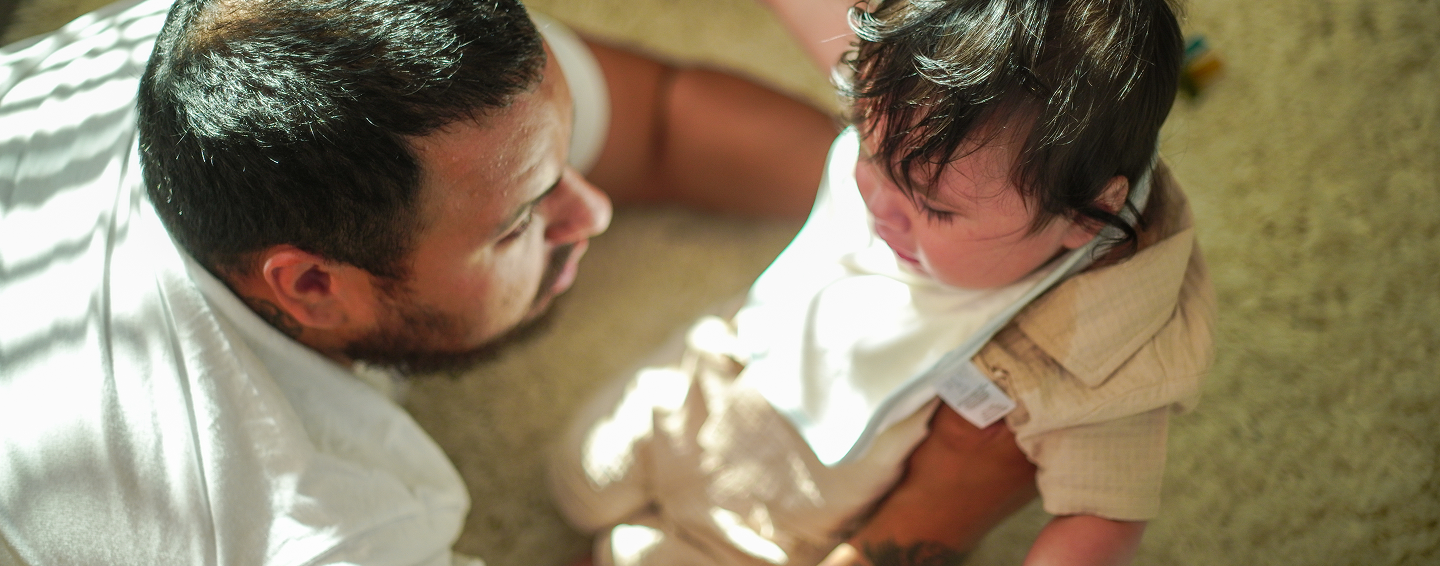Why Timing Matters When Introducing a Baby Sleep Comforter
A baby sleep comforter can be a game-changer for exhausted parents seeking peaceful nights, but knowing when and how to introduce one safely is crucial for your little one's wellbeing.
Quick Answer for Baby Sleep Comforter Introduction:
- Safest age: 7-12 months (varies by country guidelines)
- Key milestone: Baby can roll and move objects away from face
- Safety first: Always follow your country's safe sleep guidelines
- Benefits: Reduces separation anxiety, improves self-soothing, eases sleep transitions
Most babies naturally choose their comfort item around 6 months old, with attachment typically peaking at 18-24 months. Around two-thirds of babies will eventually form a good bond with a comfort object, making it a valuable tool for building independence and emotional security.
The timing isn't just about age - it's about safety milestones. While Australia's Red Nose guidelines suggest 7 months, the UK's Lullaby Trust recommends waiting until 12 months. This difference reflects varying approaches to SIDS risk reduction, but all experts agree: a clear cot is essential for younger babies.
Separation anxiety peaks from 8-10 months and can continue until 18 months, which is precisely when a baby sleep comforter becomes most helpful. As one sleep expert notes, "comforters act as transitional objects aiding babies to resettle themselves during light sleep without parental intervention."
I'm Gary Harutyunyan, and as a father who struggled with my newborn's sleep challenges, I understand the desperate search for safe, effective solutions. My journey led me to create innovative sleep aids, and I've learned that introducing a baby sleep comforter at the right time can transform both baby's rest and family peace.
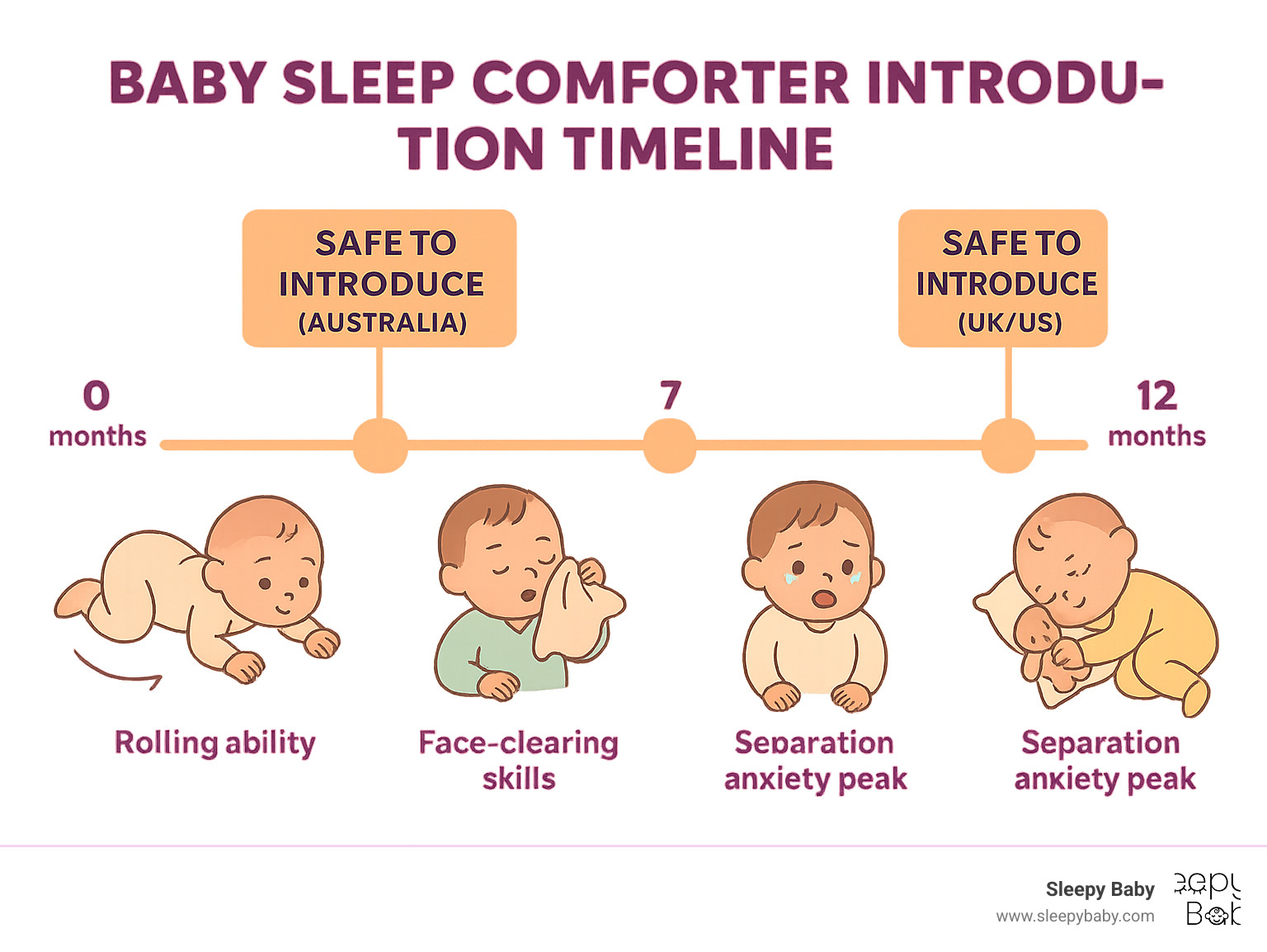
What Is a Baby Sleep Comforter and Why It Matters
Picture this: your little one is fussing at bedtime, and you're desperately trying every trick in the book. Enter the baby sleep comforter - that soft, cuddly companion that might just become your family's sleep hero.
A baby sleep comforter goes by many names: lovey, security blanket, or what child development experts call a "transitional object." This simple item serves as an emotional bridge that helps your baby steer the journey from complete dependence to growing independence.
Think of it as a portable hug that carries your love and reassurance wherever your baby goes. When you're not physically present, their comforter provides that sense of security and comfort they crave.
The magic happens through familiar sensory experiences. That soft texture, your recognizable scent, and consistent presence all signal safety to your baby's developing brain. When babies hold their comforter during feeds or bedtime cuddles, they form positive associations with feelings of warmth and security.
Scientific research on transitional objects confirms what many parents instinctively know - these comfort items play a crucial role in emotional regulation and self-soothing development. They're particularly valuable during separation anxiety periods, which typically peak between 8-10 months.
The beauty of a baby sleep comforter lies in its simplicity. It doesn't need batteries, won't break if dropped, and provides comfort through the most basic human need - the desire to feel safe and loved.
Baby Sleep Comforter Benefits at a Glance
The benefits of introducing a baby sleep comforter ripple through your entire family's daily life, creating positive changes that extend far beyond the nursery.
Better sleep onset becomes a reality when comforters provide positive sleep associations. The familiar texture and your bonding scent signal that it's time to wind down, creating a consistent sleep cue.
Night-wakings reduction might be the most welcome benefit for exhausted parents. Instead of needing you for every brief awakening, babies learn to self-soothe using their trusted comfort object.
Daycare transitions become significantly less stressful when babies have their familiar comforter for naptime. It provides continuity and comfort in new environments.
Travel reassurance transforms family trips from potential sleep disasters into manageable trips. That familiar comforter provides comfort in unfamiliar surroundings.
Sibling arrivals and other major life transitions become more manageable when toddlers have their trusted comfort object for extra emotional support during overwhelming adjustment periods.
Timing & Safety: When Can a Baby Sleep Comforter Join the Cot?
When it comes to your baby's sleep environment, safety isn't just important - it's everything. The decision about when to introduce a baby sleep comforter should never be taken lightly, as it's based on decades of research into SIDS prevention and infant development.
Scientific research on safe sleep tells us a sobering truth: over 200 babies die suddenly and unexpectedly in the UK each year from SIDS, with the highest risk occurring in those precious first six months. This is why the "clear cot" rule exists - it's literally a lifesaver.
The magic number isn't just about age. Your baby's physical development is the real key to safety. Before any comfort object can safely join your little one for sleep, they need to master crucial skills.
The essential milestone is your baby's ability to move objects away from their face. This means they can roll confidently both ways, have strong head and neck control, and can reposition themselves if their breathing becomes restricted. These skills typically develop between 6-12 months.
Think of it this way: your baby needs to be their own little safety officer before they can have a sleep companion. They need to demonstrate that if something covers their face, they have both the awareness and physical ability to fix the situation themselves.
Baby Sleep Comforter Readiness Checklist
Before your baby sleep comforter gets the green light for overnight duty, your little one needs to tick some important boxes. Motor skills development is your first checkpoint - can they roll from back to front and front to back? Do they show good head and neck control? Can they push up on their arms and move objects away from their face?
Face-clearing ability is equally crucial. Watch for signs that your baby turns their head when their face is covered, uses their arms to push away objects, and shows distress when their breathing is restricted.
Safety features check - no cords, ribbons, or strings longer than 7 inches, no loose buttons or small parts, and lightweight, breathable materials only. The comforter should be small enough that it can't cover your baby's face entirely.
Day-time trials are your testing ground. Start with supervised naps to see how your baby interacts with their potential sleep buddy.
Most importantly, trust your parental supervision instincts. You know your baby best, and you need to feel completely comfortable with their motor skills and safety awareness before making this transition.
From Nursery to Nap: Country-by-Country Guidance
The variation in international guidelines reflects different approaches to balancing SIDS risk with developmental benefits.
The UK takes the most conservative approach with their 12-month rule. The Lullaby Trust prioritizes maximum SIDS risk reduction, since the majority of cases occur before a baby's first birthday.
Australia's Red Nose guidelines are more flexible, allowing baby sleep comforter introduction from 7 months. This earlier timeline recognizes that most babies have developed sufficient motor skills by this age.
The United States aligns with UK guidance through the American Academy of Pediatrics, recommending no soft objects in the crib until 12 months.
The key takeaway? Regardless of where you live, your baby's individual development matters more than arbitrary age limits. When in doubt, your pediatrician is your best resource for personalized advice.
Choosing the Perfect Baby Sleep Comforter
Finding the right baby sleep comforter feels a bit like matchmaking - you're looking for that perfect companion who'll be there through midnight wake-ups and countless trips. The ideal comforter needs to tick three essential boxes: safety for independent sleep, appeal that creates genuine attachment, and durability to survive cuddles and washing machine marathons.
When it comes to materials, think of breathability as your best friend. Organic cotton stands out as the gold standard, offering that perfect combination of softness and air circulation. Bamboo muslin is another fantastic choice - it's naturally antibacterial and gets softer with every wash.
The size sweet spot sits around 30cm x 30cm for younger babies. This gives enough comfort without creating safety concerns about face coverage.
Here's where experienced parents will nod knowingly: buy at least three identical comforters from the start. When that beloved comforter inevitably needs an emergency wash at 2 AM, you'll thank yourself for having backups.
Comfort Blanket Safety: What Every Parent Should Know offers deeper insights into safety features and potential hazards to watch for.
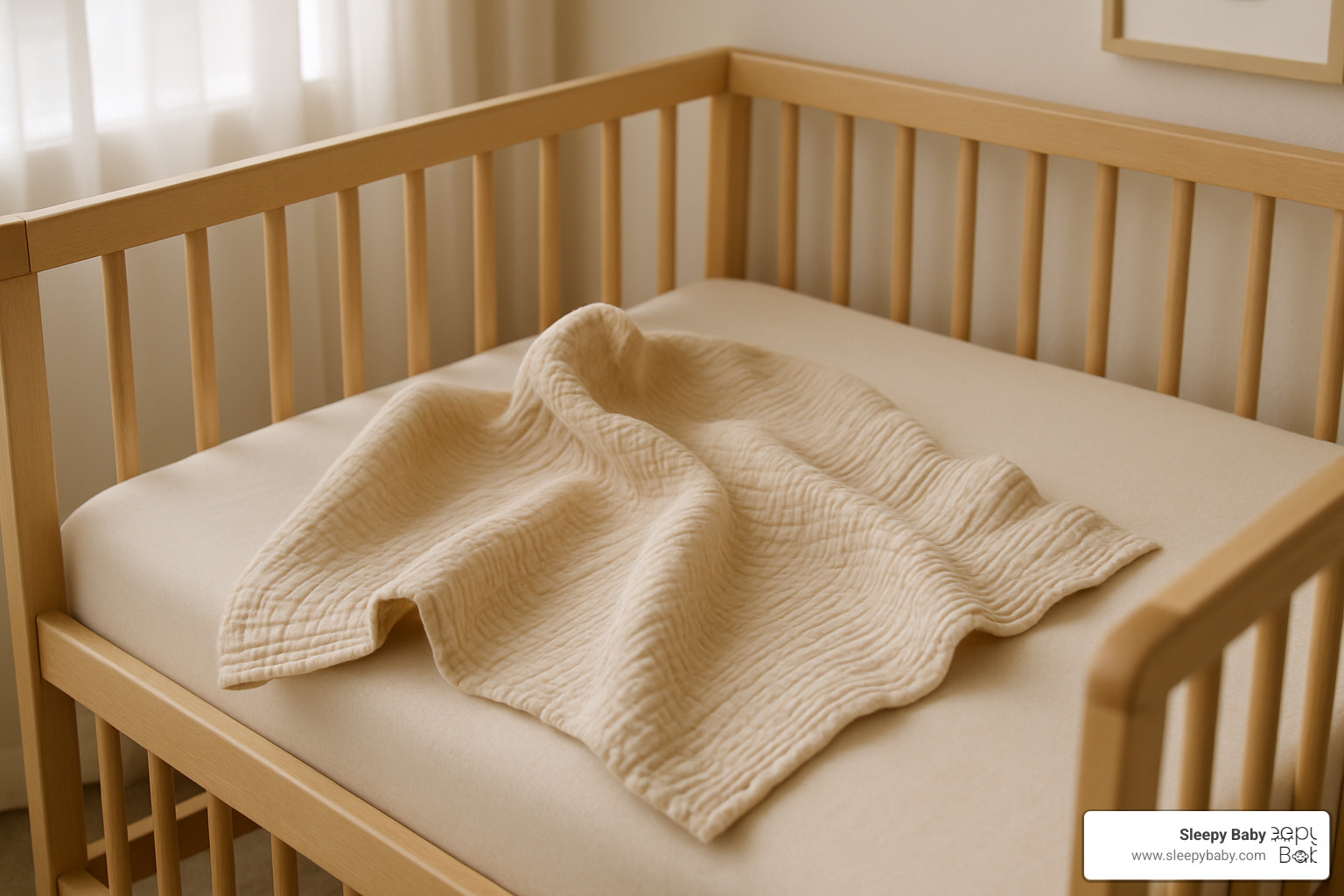
Baby Sleep Comforter Materials & Features
The devil really is in the details when choosing a baby sleep comforter. Those seemingly small material choices can make the difference between a cherished companion and something forgotten in the toy box.
Natural fibers win the comfort race every time. Organic cotton leads the pack because it breathes beautifully and feels incredibly soft against delicate skin. Cotton-lyocell blends add extra moisture-wicking power - perfect for those sweaty summer nights. These materials also get softer with washing rather than rougher.
Safe dyes matter more than you might think. Look for GOTS-certified organic cotton, which ensures both the fiber and coloring meet strict safety standards. If colors look suspiciously bright, that's often a red flag for harsh chemical dyes.
Many babies are drawn to sensory features like soft tags or different fabric patches. These textural elements can make a comforter more appealing, but every feature needs to be securely attached. Loose threads can become choking hazards if they work free.
If you're considering personalization, ensure any embroidery is flat and secure. Raised embroidery might look cute, but it can pose risks if pieces become detached.
For environmentally conscious families, some manufacturers now offer eco-friendly options that remove ocean plastic equivalent to one plastic bottle for each comforter sold.
Hypoallergenic fills are particularly important for stuffed comforters, especially if your family has a history of allergies. These fills resist bacteria buildup and repel dust mites.
Baby Sleep Comforter: Age Suitability, Safety & Benefits (Comparative Table)
| Age Range | Safety Level | Key Benefits | Recommended Features | Precautions |
|---|---|---|---|---|
| 0-6 months | Supervised use only | Scent bonding, routine association | Lightweight, breathable, washable | Never leave in cot unattended |
| 7-12 months | Moderate (varies by country) | Self-soothing, sleep associations | Small size, no loose parts | Follow local guidelines |
| 12+ months | Safe for independent use | Independence, emotional security | Durable, multiple spares | Regular safety checks |
| 18+ months | Fully safe | Transition support, travel comfort | Personalization options | Monitor for over-attachment |
| 3+ years | No restrictions | Emotional support, keepsake value | Any safe design | Gradual weaning if desired |
Step-by-Step: How to Introduce a Comforter Successfully
The journey to successfully introducing a baby sleep comforter is like teaching your little one a new language - the language of self-comfort. With patience and the right approach, you'll help your baby find their pathway to peaceful sleep.
From Crib to Comfort: When to Introduce a Comforter offers additional detailed guidance on timing and techniques.
Start with your scent - the most powerful comfort tool you possess. Sleep with the comforter for several nights, or tuck it inside your shirt during the day. Your familiar smell transforms an ordinary object into something deeply reassuring. Hold the comforter during feeding sessions, creating precious positive associations.
Introduce during calm moments when your baby is alert but content. Offer the comforter during peaceful feeding times or gentle cuddles. Let your little one explore the texture and become familiar with their new companion without pressure.
Weave the comforter into your bedtime routine consistently. Include it in that final cuddle before placing your baby in the cot, making it a natural part of the wind-down process. This consistency helps establish the comforter as both a sleep cue and source of comfort.
Build independence gradually - Rome wasn't built in a day, and neither is comfort object attachment. Initially, you might need to help your baby hold their comforter. Over time, they'll naturally learn to seek it out independently. Be patient, as it typically takes 4-6 weeks for strong attachment to form.
Rotate between identical comforters to maintain familiar scents and prevent distress during washing days. This strategy also helps prevent over-attachment to one specific item.
Troubleshooting: If Baby Rejects the Comforter
Not every baby immediately accepts their designated comfort object, and that's perfectly normal. About one-third of babies don't form strong attachments to comfort objects - some little ones are simply more independent by nature.
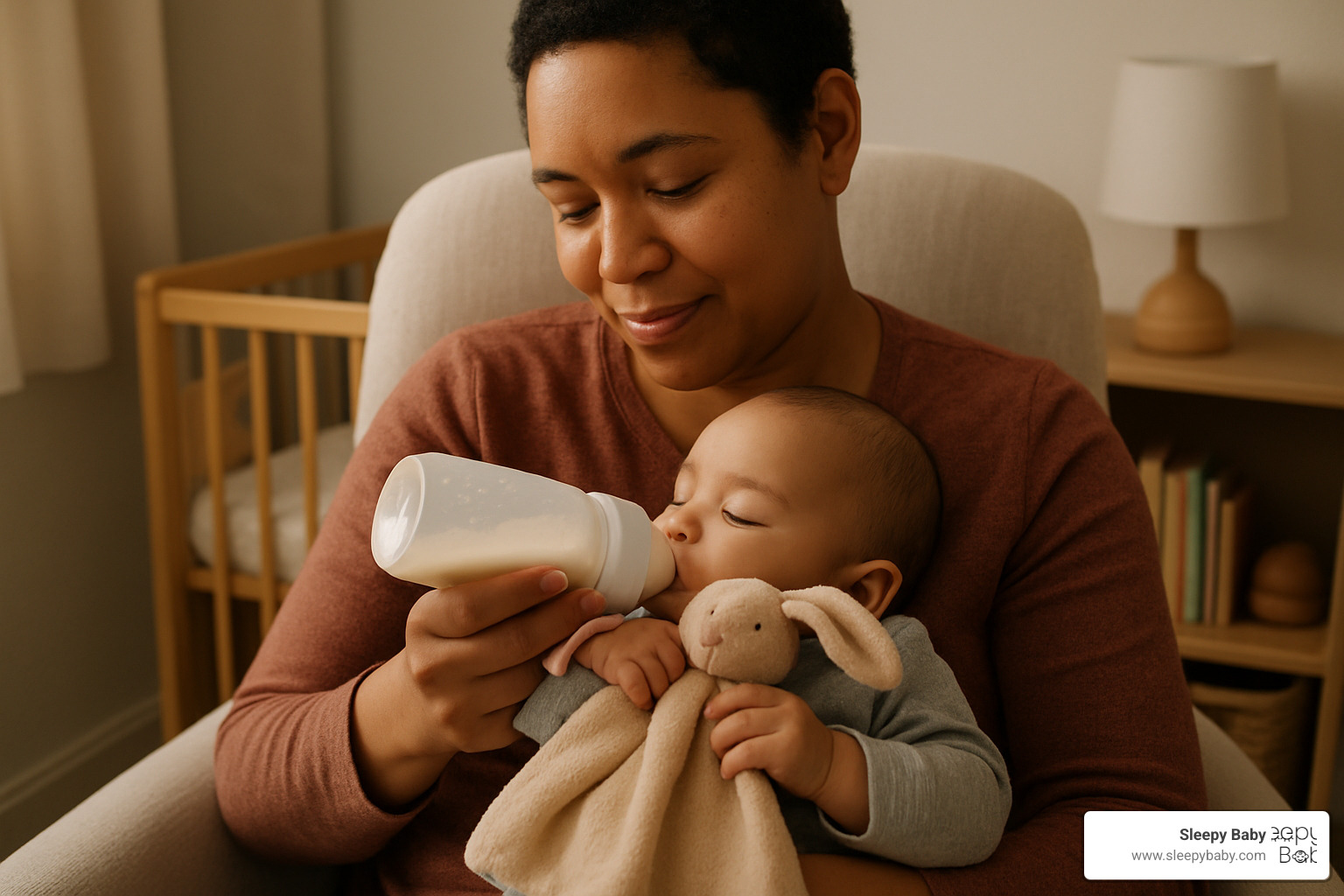
Try different textures if your first choice doesn't appeal. Some babies prefer smooth muslin fabrics while others gravitate toward varied textures. Experiment with cotton blends, velour, or bamboo materials.
Adjust your timing if the comforter seems overwhelming. Sometimes babies are more receptive during calm morning moments rather than overtired evening periods.
Model cuddling behavior by demonstrating how to snuggle the comforter during feeds. Babies are natural imitators, and seeing you interact positively with the object can spark their interest.
Stay patient through the process - attachment formation takes time and can't be rushed. Continue offering the baby sleep comforter consistently without forcing interaction.
Consider natural selection - sometimes babies choose their own comfort object despite our best intentions. Follow your baby's lead if they show preference for something else.
Weaning Off When the Time Is Right
Most children naturally outgrow their attachment to comfort objects without parental intervention. Research shows attachment typically peaks at 18-24 months and gradually diminishes, with fewer than 8% of children still attached by age 5½.
Natural decline is the most common pattern, with children showing less interest around age 3. This coincides with increased independence and confidence.
Gradual limits work better than sudden removal if you need to encourage independence. The comforter might stay in the bedroom rather than traveling everywhere.
Praise independence when your child doesn't need their comforter, but avoid making them feel ashamed of their attachment.
Keep as a keepsake when the time comes to say goodbye. Many parents preserve their child's beloved comforter as a precious reminder of this important chapter.
Safety, Care & Quick FAQs
Keeping your baby sleep comforter clean and safe isn't just about hygiene - it's about preserving that precious bond while ensuring wellbeing. Think of proper care as protecting a treasured family member.
The golden rule for washing is gentle and frequent. Most comforters can handle machine washing, but always check care labels first. Cold water with baby-safe detergent is your best friend - hot water might seem more hygienic, but it can break down fibers and cause shrinkage that creates safety hazards.
Weekly washing is the sweet spot for most families, though you'll need to wash more often during particularly drooly phases or after diaper blowouts. Babies explore everything with their mouths, so that beloved comforter gets plenty of attention.
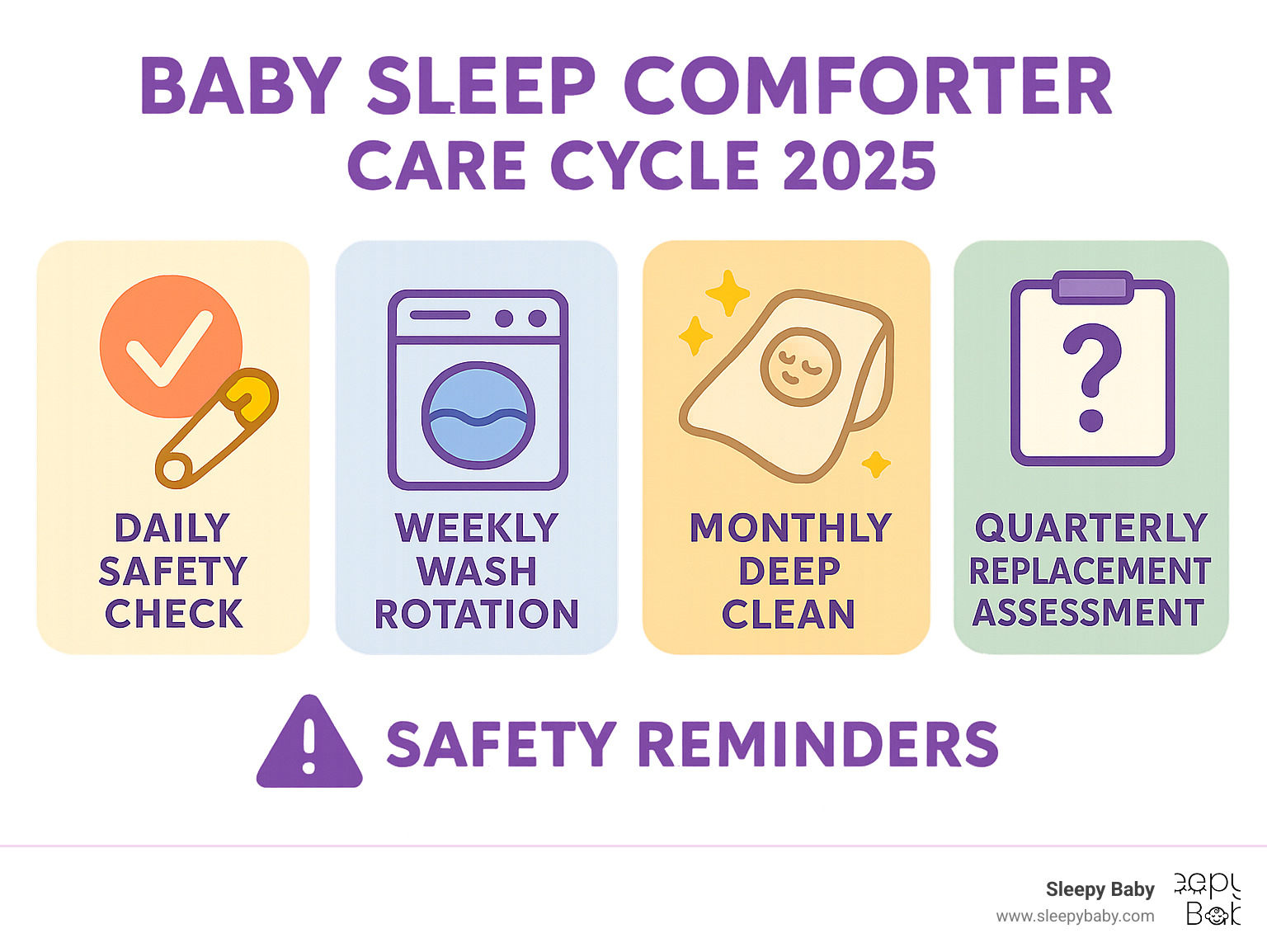
Replacement time comes when you notice loose threads, torn seams, or damaged safety features. It's heartbreaking to retire a beloved comforter, but a worn one can pose choking or suffocation risks.
Smart storage makes life easier. Keep one spare in the diaper bag, another at daycare, and store clean backups in a dry place. For families dealing with allergies, hypoallergenic materials and frequent washing help.
FAQ #1: Can a Comforter Replace Parental Comfort?
This worry keeps many loving parents up at night, but here's the reassuring truth: a baby sleep comforter can never replace you. It's not designed to, and it simply doesn't work that way.
Think of your baby's comforter as a bridge, not a replacement. It carries the love and security you provide during cuddles and extends that feeling during times when you can't be physically present - like during sleep or at daycare.
The magic happens precisely because the comforter is connected to you. Your baby bonds with it during feeding sessions and bedtime cuddles. It works as a soothing tool only because it represents the safety and love you provide every day.
Research backs this up - babies with strong parental attachments are actually more likely to successfully bond with comfort objects. The security they feel with you transfers to their comforter.
FAQ #2: How Many Spares Should I Keep?
The magic number is at least three identical comforters: one in active use, one in the wash, and one as emergency backup. This rotation ensures your baby always has access to their familiar friend while keeping things clean.
Here's a parent-tested tip: buy even more spares initially if you can. Discontinued designs have caused more toddler meltdowns than we care to count. It's easier to stockpile identical items early than desperately search online later.
Rotate regularly so each comforter maintains familiar scents and feels equally comforting. This prevents over-attachment to one specific item.
FAQ #3: Are There Downsides to Long-Term Attachment?
Long-term attachment to comfort objects is generally healthy and normal, with most children naturally outgrowing their dependence as they gain confidence.
Separation distress can happen when comforters are lost or in the wash. This is exactly why having multiple identical spares is crucial.
Very rarely, some children become so dependent on their baby sleep comforter that it interferes with daily activities beyond typical age ranges. If your child cannot function without their comforter present at all times well past the usual outgrowing period, a chat with your pediatrician can provide guidance.
The good news? These concerns are uncommon. The vast majority of children benefit tremendously from comfort objects without negative effects. The emotional security and self-soothing skills they develop often translate into greater confidence and independence as they grow.
Conclusion & Next Snoozy Steps
Choosing the right baby sleep comforter and introducing it at the perfect time can genuinely transform those exhausting nights into peaceful ones - for both you and your little one. The magic happens when safety, timing, and your baby's unique personality all come together in harmony.
There's no universal timeline for comfort object success. Some babies will clutch their new lovey from day one, while others might take weeks or even months to warm up to the idea. Both scenarios are completely normal, and neither reflects on your parenting or your baby's development.
The most important takeaway is safety first, always. Whether you follow Australia's 7-month guideline or prefer the more conservative 12-month approach, your baby's individual development matters more than any calendar date. Trust your instincts - you know your child best.
At Sleepy Baby, we've finded that the most effective sleep solutions often work beautifully together. Consider pairing a safe baby sleep comforter with our rhythmic patting sleep aids for truly hands-free settling. While your baby snuggles their beloved comfort object, our portable devices provide that familiar, soothing touch that mimics your gentle pat. It's like having the best of both worlds - the emotional security of a comforter combined with the physical comfort of a caregiver's touch.
The journey to independent sleep isn't always smooth sailing. Some nights will be better than others, and that's perfectly okay. Your patience and consistency will pay off as your baby develops the self-soothing skills that serve them well beyond the baby years.
For deeper insights into navigating the comfort object decision safely, don't miss our comprehensive guide: To Comfort or Not? Baby Sleep Safety with Comforters.
Here's to peaceful nights and well-rested families - you've got this!


